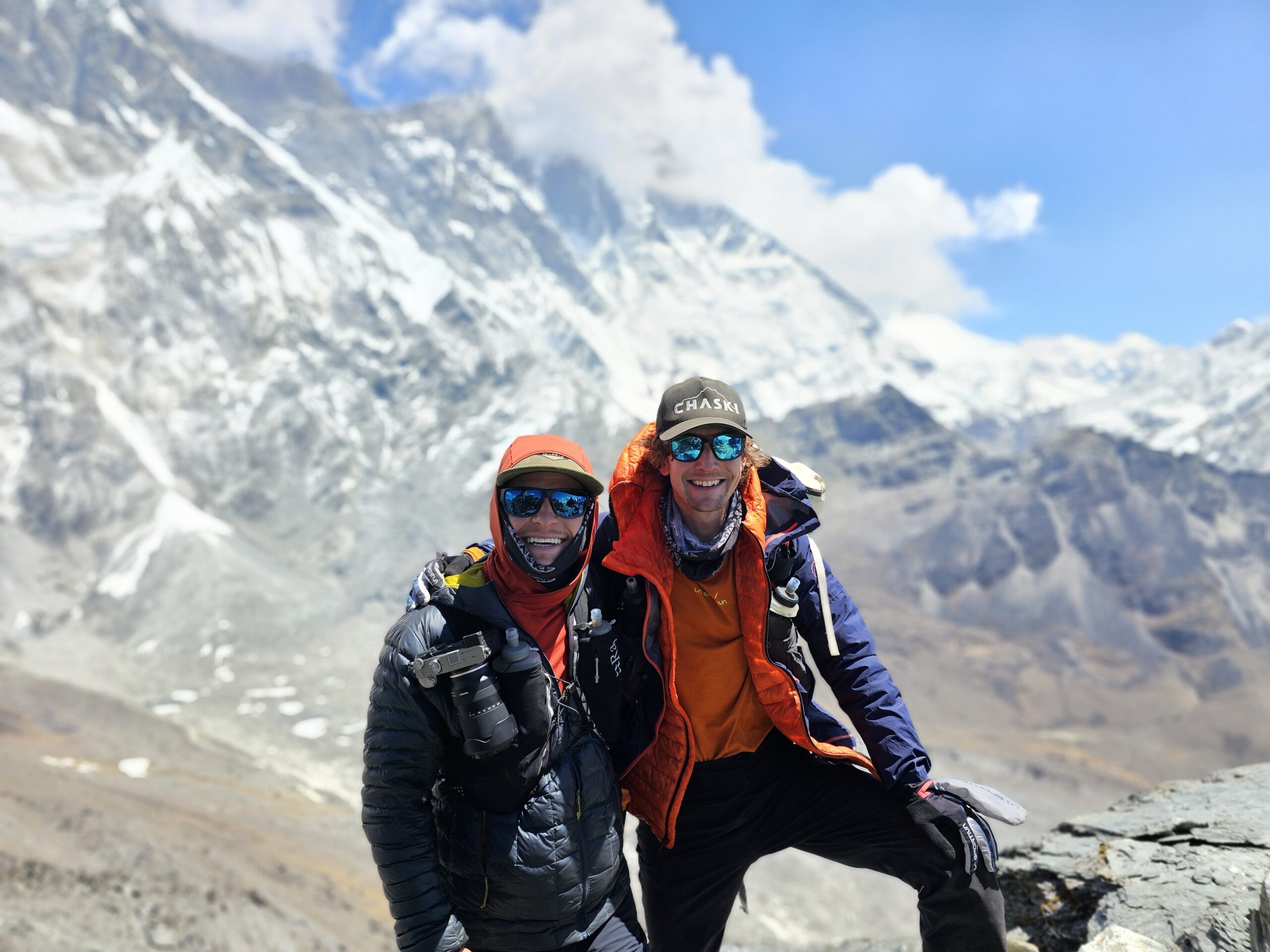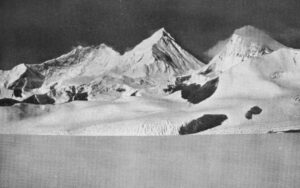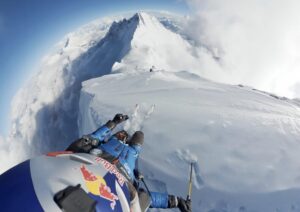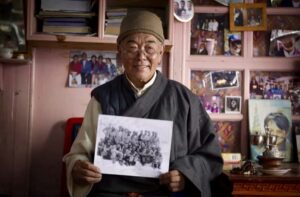Last year, ultrarunner Tyler Andrews of the U.S. went to Nepal and discovered a promising arena for speed records. This spring, he plans to speed up the difficult Pumori, then Lhotse, with partner Chris Fisher. If they have time and energy, they’ll try Makalu at the end.
We spoke to Andrews and Fisher before they headed to Base Camp.
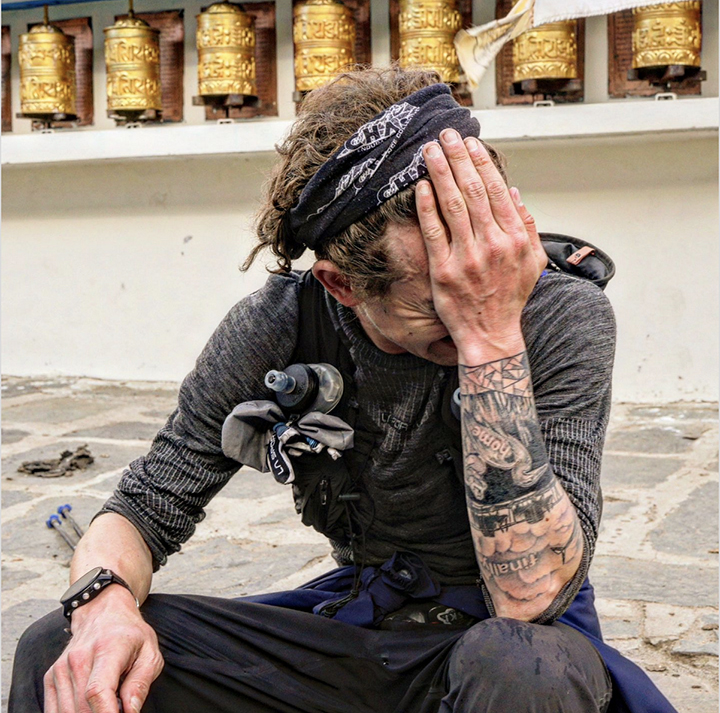
Tyler Andrews after his record Ultra Everest run. Photo: Chris Fisher
Record Everest run
After a fruitful running trip to Chile’s Atacama Desert, Andrews and Fisher flew to Nepal. Shortly after arriving, Andrews started by winning the Ultra Everest Race. It was 70km, with 3,800m of elevation gain and loss. Andrews explained that this is one of many FKT-style races around the world that you can run any time within a period of two or three weeks.
“At the end of the period, times are compared and the winner is announced,” he said. “I did the run on the last day of the established period and ended up victorious.”
It was a test for Andrews, who had not run such a long distance this year.
Andrews chose to race in the dark. He set off at 7 pm and finished at 8 am the following morning.
“I wanted to work on performing in colder temperatures and navigating in the dark,” said Andrews. “But it was also great because at this time of the year, the trails to Everest are pretty crowded. During the night I was on my own, without big groups of tourists or yaks.”
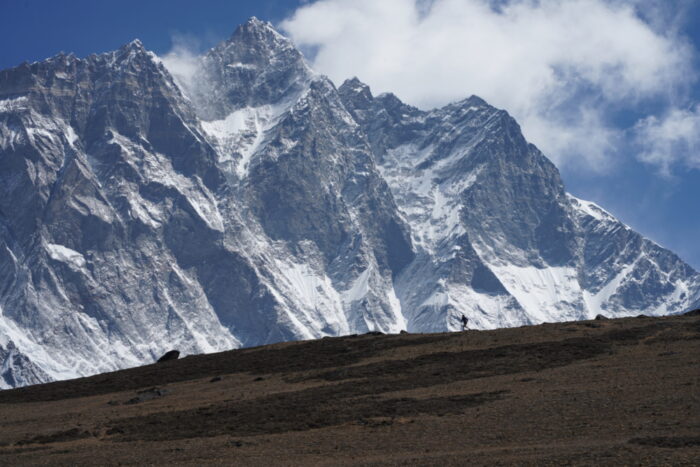
Tyler Andrews runs near Dingboche, with the South Face of Lhotse behind. Photo: Chris Fisher
Currently, Andrews and Fisher are acclimatizing on lesser peaks, waiting for the routes on Pumori and Lhotse to be ready. The route through the Khumbu Icefall has suffered several delays, and sherpas have yet to fix the route on Pumori.
The two peaks face one another, so that the runners, based at Everest Base Camp, can alternate rotations up and down Pumori or Lhotse-Everest, depending on conditions.
“The route on Pumori should be ready by the end of April,” Fisher said.
Climbing on their own
Last year, a sherpa on oxygen accompanied Andrews. This time, the two athletes will climb independently.
“We teamed up and had a great season in Atacama, including some FKT’s — Ojos del Salado in 2 hours, 22 minutes!” said Andrews. “Also, Chris is more of an alpinist than I am, with better technical skills, so that’s a great asset.”
Although both are skyrunners, they will work as a team rather than as competitors.
“Perhaps, if we go to Makalu, we might split up and run individually. But for the time being, we’re a team,” said Andrews.
Fisher noted that these mountains are so demanding that the focus is merely to achieve the goal safely.
“Go fast, don’t die,” is our motto, says Fisher.
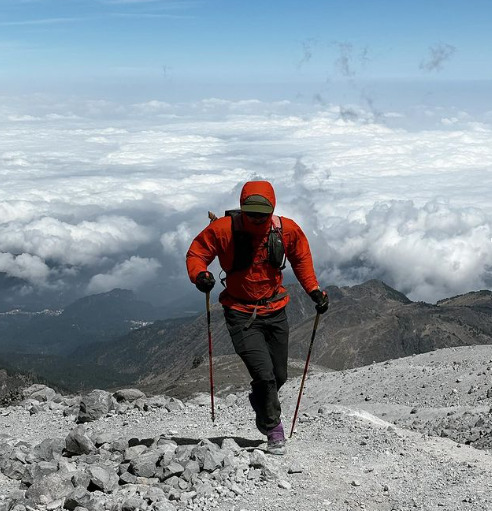
Chris Fisher runs up on Orizaba in Mexico. Photo: Chris Fisher/Instagram
The athletes will climb in one push and use no supplementary oxygen. “Hard, It’s gonna be hard!” said Fisher.
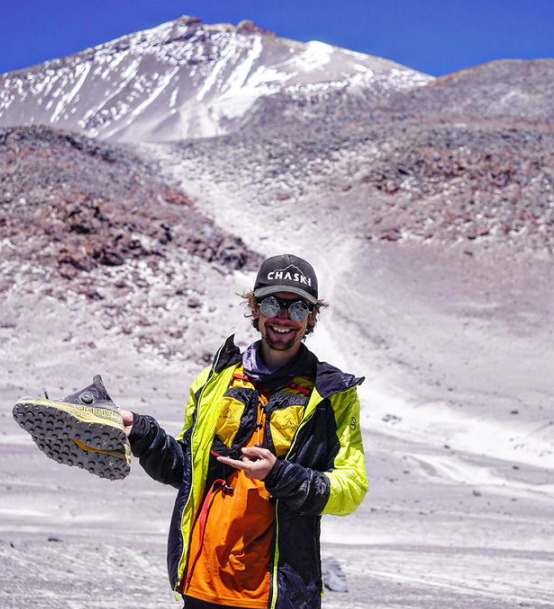
Andrews in front of Ojos del Salado. Photo: Tyler Andrews/Instagram
“It should be okay up to Camp 3 since we should be acclimatized by then,” Fisher said. “Luckily, we also have good training through long days at altitude, after we did the Tres Cruces traverse in Atacama, which involved 18.5 hours linking three peaks. We were over 6,000m most of the time.”
Fisher also ran all of Colorado’s 14,000’ers last winter and did many 20-hour ski tours. Check the video below about the speed traverse of Tres Cruces:
Previous records
In mountaineering, the FKT trend is relatively new, so it is hard to say who is currently the fastest on Pumori and Lhotse. It varies, depending on logistics, style, and departure point.
However, Fisher mentioned that Dawa Steven of Asian Trekking took 30 hours to do Pumori (with a rest in a higher camp) from Everest Base Camp. We have asked Lucien Boucansaud how long he took to solo Pumori last fall.
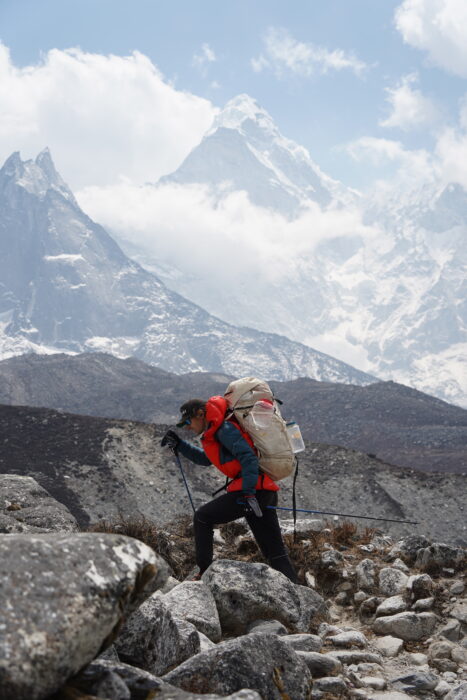
Andrews on the run. Photo: Chris Fisher
As for Lhotse, Fisher cited a legendary climber as the current speed record holder. In 1996, Anatoly Boukreev of Kazakhstan climbed the peak in 20 hours and 45 minutes. And he did it “two days after summiting Everest without O2!” Fisher pointed out.
Andrews and Fisher are considering trying Makalu but are not as committed to it as to the first two. “That would be the cherry on top of the cake,” said Fisher. He said they would attempt it only if everything prior went well and they were still feeling strong.
